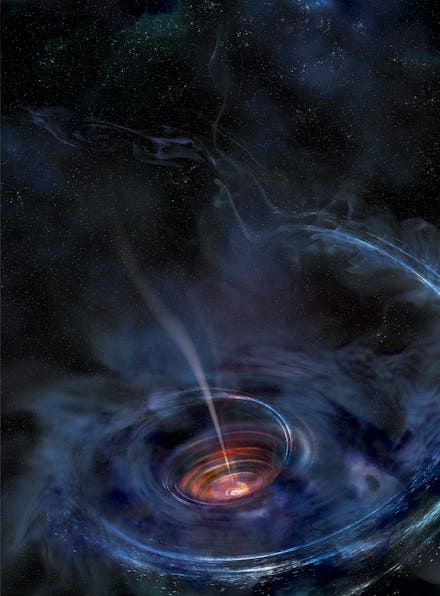We Just Got an Unprecedented Look at a Black Hole Ripping Apart a Star

For the first time ever, astronomers got a close-up peek at a black hole ripping apart a star.
For the research, astronomers used data from a tidal disruption that happened 3.9 billion years ago and was first detected in 2011. A tidal disruption is a rare event that happens when some of the star's material gets ejected out into space after a black hole shreds it up.
While the tidal disruption was happening, bursts of X-rays from the black hole bounced off the disc of stellar debris that accumulated around the black hole.
The X-rays acted like the sound waves scientists use to bounce off the seabed and map what the ocean floor looks like (this is known as sonar). In this case, astronomers used the reverberating X-rays to map the disc around the black hole.
"While we don't yet understand what causes X-ray flares near the black hole, we know that when one occurs, we can detect its echo a couple of minutes later, once the light has reached and illuminated parts of the flow," Erin Kara, lead author of the paper, said in a statement.
"This technique, called X-ray reverberation mapping, has been previously used to explore stable disks around black holes, but this is the first time we've applied it to a newly formed disk produced by a tidal disruption."
Here's what the tidal disruption looked like in X-ray light:
For every active black hole like this one, astronomers estimate there are nine more silent, undetected ones. Studying tidal disruptions like this one could help us get a clearer picture of how black holes behave.
The team created a video explaining the research further:
Read more: